SPLA, BYOD, and Shelter In Place Asset Tracking
The sprint for compliance is on, as organizations begin the quest for complying with FASB/GASB standards before penalties are assessed. As companies research their options to support compliance initiatives, the ancillary business components for compliance created a new requirement from an audit perspective. SPLA, BYOD, and Shelter in place asset tracking are open items for companies, as the dynamic convergence of software licensing, device independence, and home office flexibility in conjunction with the rise in process and operational controls have created a new paradigm in audit and compliance requirements to support for both IT and business.
Keeping in mind compliance is required on tangible assets with 12+ monthly lease payments assigned. SPLA, BYOD, and Shelter in place asset tracking are partially related to compliance requirements, but subject to an audit, tracking, and cost containment challenges. The usage and complexity growth of these three items created demand from a series of customers and prospects, which were seeking an automated solution that would prevent additional employee workloads, as well a distraction from assigned FTE responsibilities.
With these issues in mind, the executive team at Leaseology jumped into action to design a solution that would accommodate the tracking of SPLA, BYOD, and SIPA (Shelter-In-Place Assets) in a single environment, as well as provide ancillary benefits to our customers – on top of the lease accounting and compliance services. What the executive team at Leaseology noticed is SPLA, BYOD, and Shelter In Place Asset tracking requirements had the similar physical characteristics of a standard Capital lease – which is common with both equipment and real estate leases. We decided to create a new category of business lease, called “Movables” which we have used to describe any object that would be used to potentially support a virtual employee – but also requires asset, cost tracking, and potentially an expiration date. The lesson learned in this exercise is Leaseology’s managed services solution can support these requirements and provide our customers with the convenience of handling additional accounting/audit-related duties and uncover burdened resources to work on other business needs to grow revenue or increase capabilities. We will examine the nuances of each of these business challenges, with a bit more depth and background in the following section.|Leaseology
SPLA Overview and Solution Opportunity
SPLA definition: The Microsoft Services Provider License Agreement (SPLA) is for service providers and independent software vendors (ISVs) who want to license the latest eligible Microsoft software products to provide software services and hosted applications to end customers. The latest version of this model is called Cloud Services Provider (CSP), which added confusion and complexity to an existing process that remains ambiguous from the program’s inception. The conceptual difference between SPLA and CSP is that SPLA was designed to be pre-payment of licenses at a discount, while CSP is based on the consumption of Cloud infrastructure/resources on a pay-as-you-go consumption-based model. The challenge for customers is the variability of the offering, largely focused on the purchase date, expiration date, and license transferability, as each Microsoft user is required to have a product license key – or face out of compliance penalties equal to 1.25% of the cost of the license (25 percent markup). Microsoft audits each customer every three years and will reach out to customers that are out of compliance – to schedule a review and execute a license reconciliation agreement. Microsoft is the best example of SPLA, although others such as Adobe and Oracle have similar models. The opportunity here is it’s a massive effort to keep up to date with terminations, new hires, M&A activity, and inter-company transfers – which is why this is a perfect requirement to outsource and remove a headache while avoiding out-of-compliance penalties.
BYOD
BYOD definition: Bring your own device, BYOD, is the evolving trend of employees using their personal devices for work purposes. The device referred to here could be a laptop, smartphone, tablet, portable hard drive, or any consumer piece of information technology. From a compliance and asset tracking perspective, although this trend provides great flexibility to employees as well as increases the speed of onboarding new resources, the asset tracking and accounting impact is significant. Capturing serial numbers, aligning software/firmware versions to provide consistency from an operational perspective, and maintaining an accurate list of all BYOD employees with a cross-reference into what devices are employee-owned versus leased or company-owned – is a real challenge for both IT and finance departments. The other challenge with BYOD is that most large organizations offer BYOD as an option, which means that you have to manage a blend of assets, some corporate, some personal, some company-owned, some leased. This is a logistical nightmare for IT and Finance and is rarely an optimized business process for companies. Enterprise Asset Management systems can be used for tracking, but these applications are more commonly used for depreciation of fixed assets, and most resources involved in the tracking process, do not have access to these systems. What customers are requesting is simplicity, to capture these devices and provide a monthly tracking report, so that they are current, can pass a SOC1 audit, and have visibility into device controls – namely device security, as a lost device or installing an app that has breach potentiality each put company data at risk. Similar to SPLA – it is a massive effort to stay current with all the moving parts, employees, and acquisitions, which is why outsourcing the management of this information is a logical and prudent step from a tracking perspective.
Shelter in Place Asset Tracking (SIPA)
SIPA definition: Any device that is being housed outside of an HQ facility, for the purpose of keeping employees safe from COVID exposure – this evolving trend of employees using corporate assets for the purpose of avoiding exposure to the virus, or to affected colleagues, hence their personal devices for work purposes. The device referred to here could be a laptop, smartphone, tablet, portable hard drive, or any consumer piece of information technology. From a compliance and asset tracking perspective, although this trend provides great flexibility to employees as well as expediting the onboarding for new resources, the asset tracking, and accounting impact is significant. Capturing serial numbers, aligning software/firmware versions to provide consistency from an operational perspective, and maintaining an accurate list of all BYOD employees with a cross-reference into what devices are employee-owned versus leased or company-owned – is a real challenge for both IT and finance departments. The other challenge with BYOD is that most large organizations offer BYOD as an option, which means that you have to manage a blend of assets, some corporate, some personal, some company-owned, some leased. This is a logistical nightmare for IT and Finance and is rarely an optimized business process for companies. Enterprise Asset Management systems can be used for tracking, but these applications are more commonly used for depreciation of fixed assets, and most resources involved in the tracking process, do not have access to these systems. What customers are requesting is simplicity, to capture these devices and provide a monthly tracking report, so that they are current, can pass a SOC1 audit, and have visibility into device controls – namely device security, as a lost device or installing an app that has breach potentiality each put company data at risk. Similar to SPLA – it is a massive effort to stay current with all the moving parts, employees, and acquisitions, which is why outsourcing the management of this information is a logical and prudent step from a tracking perspective.
What is the COVID Impact on SPLA, BYOD, and SIPA?
Corporate roadmaps have been highly impacted by COVID influenced business changes, which have a direct impact on equipment and real estate leases by not having readily access to lease documents, tracking critical dates, and clear understanding for new lease accounting compliance as the new normal has created the following challenges to traditional business operations:
1) SPLA – Software Provider Licensing Agreement – The rent or leasing of a software license/subscription – as employees become more virtualized, tracking their expiration dates on assets is now a reporting and compliance risk for businesses, as these assets potentially carry a monthly disclosure responsibility, as well as influence the way EBITDA is calculated. Are you tracking your SPLA? Do you have the next generation of SPLA (CSP?)
2) BYOD – Bring your own device – This trend is growing rapidly, as it adds speed to the onboarding process as well as reduces the capital cost of hiring a new employee – also highly preferred by the millennials, who rely on their personal devices for all things social or personal. Do you have the asset tracking sophistication to discern what employees are using their personal devices? What about contractors? Do you have a way to track these assets?
3) Shelter in Place Asset Tracking (SIPA) Home office Equipment usage – How do you track the home usage on cell phones, laptops, tablets, displays/monitors, chairs, desks, and printers? Where are these assets physically located? Which assets are employee-owned versus corporate? Leased versus owned? More and more of the leased assets are making their way into employee home offices, so understanding the logistics around leased equipment as well as managing the leases themselves, has created exponential growth in this area – creating an opportunity to help customers understand their assets and liabilities.
SPLA, BYOD and SIPA Key Takeaways
- Manually tracking of these assets is not of core business value – outsource
- Companies need a program to address these trending requirements and a partner to help guide them through the process
- Automation is needed for keeping up with the pace of change, as well as for the ongoing reporting on assets
- Experts are required to help guide customers stemming from this new business capability/challenge
Leaseology understands what internal lease accounting teams are up against when it comes to SPLA, BYOD, and Shelter in Place Asset Tracking (SIPA), and have built an end-to-end solution that allows customers to divert resources, remove cost, increase accuracy/locate cost savings opportunities – all while achieving compliance via an outsourced lease management process. Although these responsibilities are not always handled by finance/accounting – they are corporate burdens and obstacles to profitability. Let the experts help you as at the core of the Leaseology service offering, our combination of industry expertise in lease accounting, compliance, reporting, and automation can help you meet your tracking and compliance requirements.
Download a roadmap on How to outsource compliance on an automated platform, while reducing CFO level risks associated with asset tracking, licensing or disclosure statement generation issues.
Ken Royce * Leaseology Inc * Board of Directors
ABOUT Leaseology Inc|
Leaseology, Inc is a North America-based business advisory services firm committed to accelerated marketplace adoption of digital technology, financial management innovation, and business operations practice excellence. These core competencies apply to real estate and equipment portfolios.















